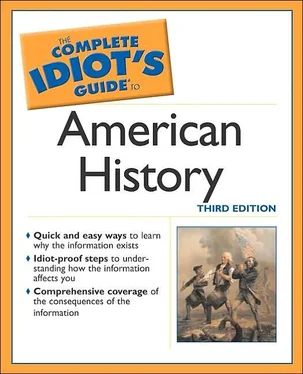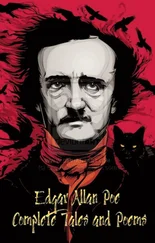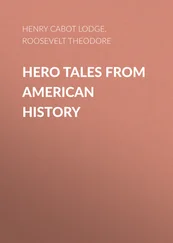After recording sound and producing light, the Wizard of Menlo Park (as the press soon dubbed the inventor) recorded light. Edison became interested in motion photography after he attended a lecture by Eadweard Muybridge (1830-1904) on his experiments with recording motion on film using multiple cameras. In 1882, a French scientist, E.J. Marey, invented a means of shooting multiple images with a single camera, and Edison patented his own motion picture camera in 1887. Edison then worked with William Kennedy Laurie Dickson to create a practical means of recording the images, using flexible celluloid film, created by George Eastman (1854-1932). (Eastman’s Kodak box camera would bring photography to the masses in 1888.) By the 1890s, Dickson had shot many 15-second movies using Eastman’s film in Edison’s Kinetograph camera.
Bridge and Skyscraper, Kitty Hawk and Detroit
The end of the Civil War brought many monuments—statues, arches, and tombs—but more significant than these were the monuments to American civilization itself. In 1857, a German immigrant named John Augustus Roebling (1806-69), a master bridge builder who had constructed suspension bridges over the Monongahela River and at Niagara Falls, proposed a spectacular span over the East River to unite Manhattan and Brooklyn. Roebling completed his plans in 1869 but suffered a severe leg injury at the construction site and died of tetanus. His son, Washington Augustus Roebling (1837-1926), took over the epic task—which very nearly killed him as well; he spent too much time in an underwater caisson, supervising construction of the bridge towers. As a result, Roebling developed a permanently crippling, excruciatingly painful case of the bends caused by nitrogen bubbles in the blood. The bridge, finally completed in 1883, was and remains a magnificent combination of timeless architecture and cutting-edge 19th-century technology.
If the Roeblings’ masterpiece brought to its grandest expression the union of 19th-century art and science, the American skyscraper looked forward to the next century. William LeBaron Jenny’s Home Insurance Company Building in Chicago (1883-85) is generally considered the first skyscraper, but it was Louis Sullivan (1856-1924), one of the nation’s greatest architects, who became the most important master of the new building form. With his partner Dankmar Adler, Sullivan based his practice in Chicago, a city he helped to raise, phoenix-like, from the disastrous fire of 1871. Thanks to Sullivan and those who followed him, American cities became vertical, aspiring dramatically heavenward, bristling with the spires of new cathedrals founded not on religious faith, but on the wealth and raw energy of the age.
The very name skyscraper seemed to proclaim that nothing could contain the spirit of a nation that, like Chicago, had been reborn from the ashes. In 1903, the sons of Milton Wright, bishop of the United Brethren in Christ Church in Dayton, Ohio, transported to a beach at Kitty Hawk, North Carolina, a spindly, gossamer machine that resembled an oversized box kite. While his brother Wilbur (1867-1912) observed, Orville Wright (1871-1948) made history’s first piloted, powered, sustained, and controlled flight in a heavier-than-air craft on December 17. Orville flew a distance of 120 feet over a span of 12 seconds. Within two years, the Wright brothers achieved a flight of 38 minutes over 24 miles and, by 1909, were manufacturing and selling their airplanes.
Of course, in 1909, flight was still out of the reach of most “ordinary” people. But the year before, a farm boy from Dearborn, Michigan, gave the masses wings of a different sort. True, Henry Ford (1863-1947) did not actually lift purchasers of his Model T off the ground, but he did give them unprecedented physical freedom.
Ford did not invent the automobile—a gasoline-fueled automobile first appeared in Germany, and commercial production began in France about 1890—but he did make it practical and affordable. In 1908, he designed the simple, sturdy Model T and began to develop assembly line techniques to build it. The price of the car plummeted, and demand increased; with increased demand, Ford further perfected his assembly line, turning out more and more cars at lower and lower prices.
The Model T, a landmark achievement in mass production, transformed the way Americans lived. The car created a mobile society and it created a skyrocketing demand for mass-produced consumer goods of all kinds. The Model T also changed the American landscape, veining it with a network of roads. Where the nation had been sharply divided into city and farm, suburbs now sprouted. Even more than the transcontinental railroad had done in 1869, the automobile unified the United States, connecting city to city, village to village. Yet, for all this, there was a cost well beyond the $360 price tag of a 1916 Model T. It often seemed as if the automobile was an invader rather than a liberator. Worse, American labor lost a certain degree of humanity, compelled now to take its pace from the relentless rhythms of the assembly line. The gulf between management and labor, always wide, broadened into a bitter chasm, and if the moneyed classes welcomed the technological revolution, they now had reason to fear a political one.
The Least You Need to Know
The kind of raw energy that animated the “Wild West” seemed to drive the rest of the country as well during the latter half of the 19th century.
After the Civil War, big business grew largely unchecked, even at the expense of the public welfare, creating a roller-coaster boom-and-bust economy.
Big business generated investment in innovation, and the post-Civil War period was an era of great inventions.
The cowboy’s ancestors are the vaqueros (from the Spanish vaca, “cow”), originally Indians attached to the old Spanish missions and employed by them to handle their beef herds. The cowboys roped steers with a loop of braided rawhide rope known as la reata –a lariat. They wore chaparreras, leather trousers designed to protect their legs from brush and chaparral; later, American cowboys wore chaps. The word vaquero found its American counterpart in a synonym for cowboy.
For all their notoriety, neither Jesse James nor Billy the Kid holds any Wild West record for gunfighting. In terms of number of men slain, Billy the Kid comes in at 10th place (4 murders), behind Jim Miller (12), Wes Hardin (11), Bill Longley (11), Harvey Logan (9), Wild Bill Hickok (7), John Selman (6), Dallas Stoudenmire (5), Cullen Baker (5), and King Fisher (5). Jesse James doesn’t even come close to the top 10. In nine gunfights, only one killing is confirmed, though James may have assisted in the slaying of three more.
Strangely enough, the usually canny Edison saw little future motion pictures. He even decided against projecting the films for audiences, because he didn’t think there would be much demand. Instead, Edison developed an electrically driven peephole viewing machine-the Kinetoscope—which displayed moving images to one viewer at a time for the price of a nickel. Not until 1903 did the Edison Company began to exploit projected motion pictures. In this year, Edwin S. Porter, an Edison employee, directed “The Great Train Robbery,” generally considered the first movie—the filming of a genuine story, complete with beginning, middle, and end. If the origins of the American film industry can be traced to any single event, it is the creation of “The Great Train Robbery.”
In 1908, Ford manufactured 10,607 cars retailing for $850 each. In 1916, he turned out 730,041 Model T cars at $360 each.
Читать дальше












